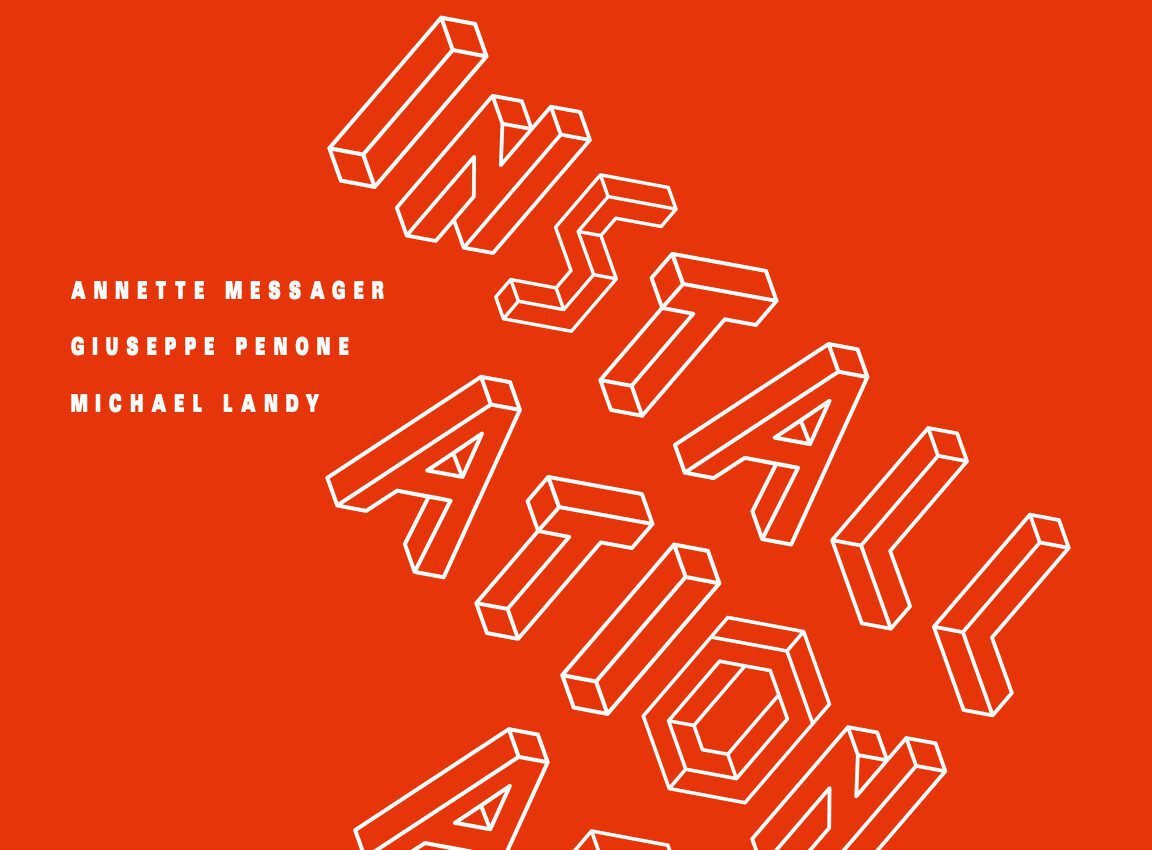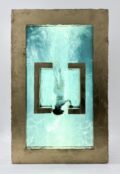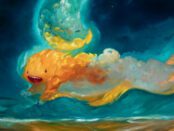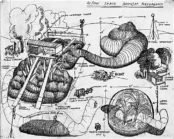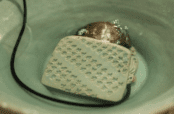Installation art is a manipulation of time and space that pulls the explorer through a series of contextual frames. Experiences of wood or metal, a walkway through or around, flashing screens or sheets of affected material, strange shapes straining through mist or ordinary objects placed in premier contexts, all weirded and heightened by their gallery surroundings. Artistic gambits aimed at forcing us to question what makes this new real a fantasy or all fantasies real.
The key aspect of installation is the role of the participant. All artworks function as a vehicle for the visitor; from cave painting through Renaissance religious works to Disneyland to artificial reality. Installation is a direct reflection of the belief that art occurs in the mind; whether that of artist or patron. An artwork is complete when the creator stops having to mentally explain the piece and when it states itself, often going so far as to offer unexpected perspectives – the magical place where, as the cliché goes, the work takes on a life of its own. Here art crosses the threshold of ontology, where an object creates the framework of its own understanding, where it breaks our usual taxonomy of functionality and dictates a new way of being. Following the crowd through any installation, the question of where the work is made is a haunting reflection of the ancient inquiry: do we create the world or are we created by it? To the extraterrestrial any human is more or less interchangeable; however for each of us – the manifestation of a particular personal history – we couldn’t be more different. We have choice, of course, but whether we are drawn to, or repulsed by the conception of ourselves as a supplied avatar within artworks, that is the big existential question. Installation art makes us consider this as it presupposes us in the construction of divergent worlds.
Trebuchet 15 – Contents
Giuseppe Penone
Michael Landy
Place as installation
Annette Messager
Karolina Halatek
Sound Art
Jean Boghossian
Jon Kipps
Chantal Meza
Contributors
Louis Cartagena
Writer and academic Cartagena works in the arts polishing bios and gallery notes in the pursuit of clarity. He also lectures, though with enough opacity to impart wonder.
Karolina Halatek
Award winning new-media artist and luminist Halatek has exhibited globally including collaborations with superstring theorists; Leonard Susskind, Roger Penrose, and Carlo Rovelli.
karolinahalatek.com
Robert Horvitz
Feature writer for Artforum in the 1970s, Horvitz joined Whole Earth publications in 1977 as art editor of their magazines before relocating to Prague in 1991.
horvitz.multiplace.org
Foster Neville FRSA
Musician and poet Neville studied under Seamus Heaney and now releases cultish music to international acclaim.
shorturl.at/abhkN
Ruth O’Sullivan
O’Sullivan is a writer and curator. Her work explores the impact of digital technologies on contemporary art practices and challenging gender disparity within the visual arts.
Barry Taylor
Former AC/DC road manager and Los Angeles pastor, Taylor (PhD, Fuller Theological Seminary) teaches theology at GCAS College Dublin. His published works include A Matrix of Meanings: Finding God in Pop Culture (2003), A Heretic’s Guide to Eternity (2008) and Sex, God and Rock‘n’Roll (2020).
Edward Winters
Winters studied at the Slade School of Fine Art and later wrote his PhD in Philosophy at UCL. He has written extensively on the visual arts and has published a book on architectural aesthetics. He is an elected member of the International Association of Art Critics (AICA).

The aim of art is to represent not the outward appearance of things, but their inward significance. – Aristotle

